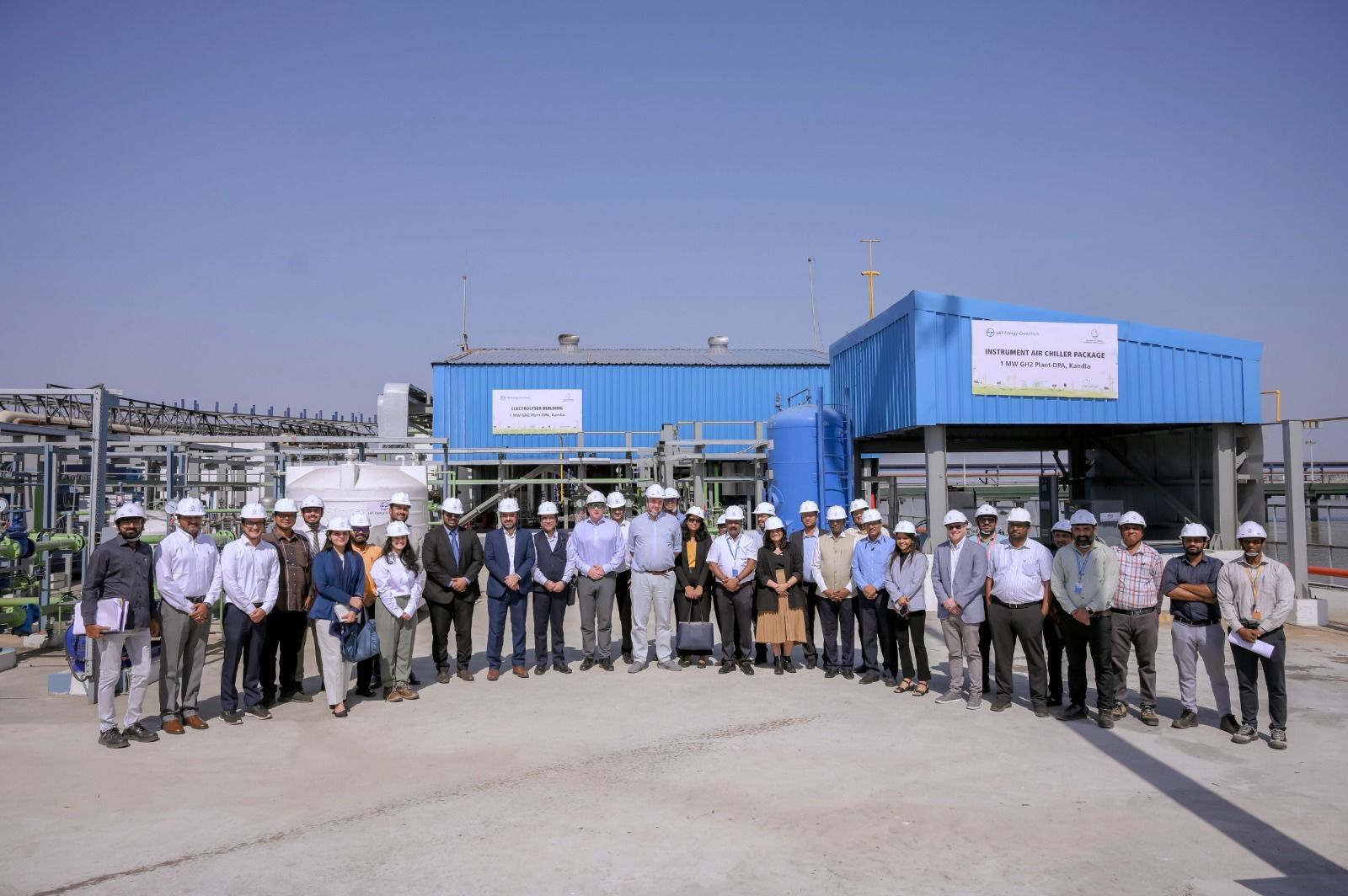No More Ambiguity in ‘Used Ship Machinery’ Trade: CGST
CGST orders strict categorization of all goods under GST norms; implementation begins April 1, 2025
Bhavnagar, Gujarat — In a move set to bring clarity and transparency to a long-standing issue, the Central Goods and Services Tax (CGST) authorities have announced a new mandate: ambiguous billing practices under the heading of “Used Ship Machinery” will no longer be permitted. The directive orders clear and specific classification of all goods, especially used marine machinery and parts, exported primarily from the Alang ship-breaking yard. The decision stems from widespread confusion and inconsistency in Goods and Services Tax (GST) invoicing, which has led to disputes over tax rates and classification.

GST has been in effect across India since July 2017, aiming to unify the country’s indirect tax structure. However, Bhavnagar’s Alang yard stands apart as a major hub for the import, dismantling, and export of used ship machinery and spare parts. This unique trade scenario had created loopholes in billing practices, with exporters frequently listing goods under vague or incorrect categories, resulting in varying GST rates being applied.
The CGST department has issued a directive, with immediate effect, calling for stringent adherence to item classification under the GST Tariff, particularly for goods listed under Chapters 84 and 85.
Ambiguity in Descriptions Raises Red Flags
Under GST Tariff Chapters 84 and 85, descriptions like “used, old machinery or parts of machinery” have been used as blanket terms in invoices. These general labels have caused significant ambiguity regarding the applicable tax rates.
For instance, marine propulsion engines are technically classified under HSN 840810, attracting a GST of 28%. Likewise, parts of these engines fall under HSN 8409 and should also be taxed at 28%. However, according to CGST officials, many traders have misclassified such items under HSN 84879000, which falls under a lower 18% GST bracket, as “parts of machinery” — a clear violation of the GST rules.
Similarly, components such as gearboxes, compressors, pistons, and crankshafts — all of which have defined categories within the GST Tariff — have often been wrongly billed at the 18% rate. The inconsistencies, officials say, stem from a lack of clarity in descriptions, compounded by inadequate documentation and record-keeping by traders.
New Rules: What Traders Must Do Now
According to the new CGST directive, all registered taxpayers involved in the supply of used or old ship machinery, engines, or their parts must maintain separate and detailed records for inward and outward supply and existing stock.
Each invoice issued must include:
-
Precise HSN code
-
A clear, detailed description of the goods
-
Correct applicable GST rate
-
Quantity of goods in proper units or UQC (Unit Quantity Code)
This rule applies to all transactions starting immediately and will also extend to current inventories as of April 1, 2025. Non-compliance could result in penalties, audits, or legal consequences under GST regulations.
Expert Opinion: A Welcome Move Towards Transparency
Tax consultant and industry expert Bharatbhai Sheth has welcomed the CGST’s decision. Speaking on the issue, he said:
“Under Section 35(3) of the CGST Act, 2017, the department is empowered to demand accurate and transparent accounting. This directive is a much-needed step to ensure consistency in tax application and to close loopholes that have existed for years. Traders must now maintain precise records and avoid vague terminologies. They should clearly define whether the product is a used engine, a compressor, or any other part, along with its purpose and usage.”
According to Sheth, defining old and used machinery more precisely will help bring uniformity across trade practices, especially in Alang, which has long functioned with loosely defined goods in GST documentation.
CGST Act: Legal Implications and Requirements
The move is also being seen as a direct response to poor compliance with Section 35 of the CGST Act, which mandates proper maintenance of books and accounts by registered taxpayers. Inspections carried out by CGST officers in the region revealed that in many cases, records were either incomplete or inaccurately maintained. This created a breeding ground for tax evasion, disputes, and revenue loss.
To combat this, CGST has also cited Rule 46 of the CGST Rules, 2017, which lays down the mandatory contents of a tax invoice. It specifically mentions the need for:
-
Detailed item description
-
HSN code
-
Applicable tax rate
-
Quantity in UQC (standardized unit of measurement)
Authorities warn that vague entries like “used machinery” without further clarification — especially when applied to high-value exports — are no longer acceptable.
Implementation and Compliance Timeline
While the directive takes immediate effect for all new transactions, it also extends to existing stock. Businesses must reclassify and relabel their current inventories to comply with the new guidelines by April 1, 2025. This gives traders roughly one year to audit their records, update accounting systems, and retrain staff.
The CGST department has also indicated that spot audits and verifications may be carried out to ensure compliance. Repeat offenders or those found deliberately misclassifying goods may face hefty fines or legal action.
Alang’s Unique Role in the National GST Landscape
Alang, located in the Bhavnagar district of Gujarat, is one of the largest ship-breaking yards in the world. The yard receives decommissioned ships from across the globe, dismantles them, and salvages usable parts. These parts — from massive engines to intricate electrical systems — are then refurbished and exported or sold domestically.
Given this unique economic role, Alang’s trade practices have often stood apart from regular manufacturing or import-export channels. However, the CGST department’s latest move signifies that uniformity and clarity are now being demanded even in niche industries.
Final Thoughts: A Step Towards Clean Trade
This directive by the CGST marks a significant step towards standardizing GST practices in industries dealing with used and second-hand goods. By enforcing detailed classification and invoice standards, the department aims to eliminate ambiguity, increase revenue transparency, and reduce legal disputes.
For Alang’s thriving second-hand ship machinery market, this could mean a temporary increase in compliance work — but in the long term, it promises a more credible and streamlined trade environment. With a clear implementation date set for April 1, 2025, traders now have time to align with the new norms and embrace a cleaner, more transparent future.
Author: shipping inbox
shipping and maritime related web portal








